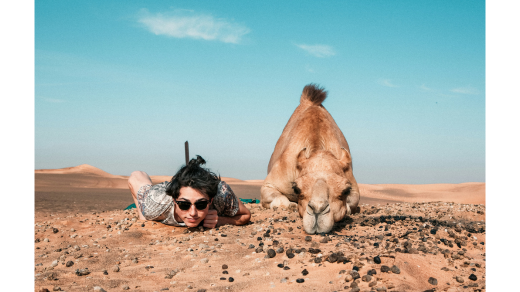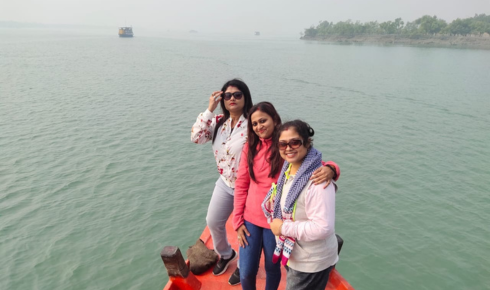
1. What is overlanding?
Overlanding is traveling long distances by vehicle to often remote or adventurous destinations. Self-sufficiency often involves camping or staying in nature, and such a journey may take days, weeks, or even months. It’s the opposite of conventional travel: It’s more about the journey than the destination.
2. How do I choose the right vehicle for an overland journey?
The perfect car varies according to route, budget, and personal preference. Consider the following:
Terrain: Will it be off-road or paved-ways driving? If you are to go up rugged terrain, then a 4×4 vehicle would do.
Space: Comfort does matter; increase the space; there must be enough room for your gear as well as passengers.
Fuel consumption: Travel distance is hectic if planned for long distance travels. Hence, consider a fuel-friendly car.
Reliability: Select a vehicle that is durable and easy to maintain.
4×4 trucks, SUVs, campervans, and modified vans are some of the popular options.
3. How do I plan my route for an overland journey?
Route planning should be flexible yet detailed:
Research your destination: Look up travel blogs, forums, and maps to understand your chosen route.
Consider road conditions: Check the terrain, weather, and possible road closures.
Plan for fuel stations, food, and water: Some remote areas might lack these facilities.
Be flexible: While planning is important, overlanding often requires flexibility due to unpredictable conditions.
4. How do I prepare for border crossings?
Visa requirements: Research visa requirements for each country you’ll be entering.
Vehicle documentation: Ensure you have all the necessary papers, including registration, insurance, and a carnet de passage if required.
Customs regulations: Know the customs regulations, including what you can bring into each country.
Language: Knowing a few words in the local language will make things easier.
5. What are the must-haves for an overland adventure?
Key gear includes:
Camping equipment: Tent, sleeping bag, mat, stove, cookware, and utensils.
Navigation tools: GPS, offline maps, compass, and spare batteries.
Vehicle essentials: Jack, spare tires, tools, vehicle fluids, and repair kits.
First aid kit: Medications, bandages, antiseptic, and emergency supplies.
Water and food: Water purification tablets, portable water containers, and non-perishable food.
Security gear: Locks, anti-theft devices, and a satellite phone for remote areas.
6. What are some ways to ensure safety and security for an overland journey?
Gather information about crime rates: This will help you know which places to steer clear of, especially cities.
Low profile: Do not draw attention by concealing valuables and traveling inconspicuously.
Travel in a group: Travel with someone else, especially to remote places.
Emergency plan: Have a plan for emergencies, including local emergency numbers and embassy contacts.
Insurance: Travel and vehicle insurance are essential, especially for health and vehicle breakdowns.
7. What kind of insurance do I need for an overland journey?
You should have:
Travel insurance: Covers health, medical evacuation, and cancellations.
Vehicle insurance: A comprehensive policy that includes breakdown coverage and third-party liability.
Overlanding-specific insurance: Some companies have policies especially for long road trips or traveling abroad.
8. How should I pack for an overland journey?
Pack light but efficient: Pack only essentials and multi-purpose items.
Organize your gear: Use storage bins, waterproof bags, and a roof rack for bulky items.
Give adequate attention to security: Pack emergency kits, and other security related items.
Take into account that the climate conditions will change accordingly: Pack light clothes for summer and heavy jackets for winter as well.
9. What is the best route in the overland world?
Some of the most popular and well-known overland routes include:
The Pan-American Highway from Alaska to Argentina through diverse scenery and cultures;
The Silk Road: Connecting China to Europe-very rich with history and culture.
Australia’s Outback : a huge, though very remote area that is perfect for adventurous off-road trips.
Trans-Siberian Highway : one that connects Russia from Moscow through to Vladivostok, crossing through the world’s biggest country.
10. How do I handle food and water needs on an overlanding journey?
Food: Bring non-perishable foods such as canned goods, dehydrated meals, and energy snacks. Learn to cook with a limited supply of gear.
Water: Pack adequate water for extended periods and include a good water filter or purification system. Off the beaten track, find natural water sources and treat every time.
11. What are the most frequent overland vehicle maintenance problems?
Tire troubles: Flats, blowouts, or underinflated tires occur when driving off the beaten path. Carry a spare tire and have repair equipment with you.
Mechanical problems: Regularly check the oil levels and fluids, keep extra belts and filters.
Electric failures: Keep jumper cables, fuses, and spare batteries on hand.
Fuel system failure: Be sure to use the correct type of fuel, especially if traveling in other countries.
12. How can I stay connected during my overlanding trip?
Satellite phones: for areas where you cannot get cell service
Offline maps: Download maps for off-line use where there is no internet service.
Local SIM cards: If you are traveling in areas where cell coverage is possible, buying a local SIM will save you from international roaming charges.
13. How do I prepare for extreme weather conditions on an overland journey?
Know the forecast: Check weather reports for your route and prepare accordingly.
Prepare for cold or heat: Pack gear for both extreme heat (like sun protection and hydration) and cold (layers, sleeping bags).
Emergency Shelter: Have a dependable tent and sleeping system to cope with abrupt changes in the weather.
Bring along extra fuel: If you’re going through really cold or hot places, have your vehicle prepped for extreme temperatures.
14. What do I do in case my vehicle breaks down during the overland expedition?
Learn Basic Fixes: Understand how to replace a tire, inflate a tire, jumpstart your car and learn simple vehicle repair skills.
Carry spares and tools: Carry a toolbox, extra belts, hoses, and fluids.
Know when to seek professional help: If the problem is more than what you can handle, do not hesitate to call for professional help.
15. What are the documents needed to travel overland?
Required documents are:
Passport: It should be valid for the duration of the trip.
Visas: Visa requirements for every country you intend to visit.
Driver’s license: Assure it remains valid in countries you will visit.
Vehicle paperwork: Registration insurance and carnet de passage is essential for your trip abroad
16. I should prepare well before embarking on an overland journey and health precautions can be taken while planning.
Recommended vaccinations: depending on the route (e.g. malaria if going to that area, Typhoid )
Medical kit of all essentials along with pain medications, antiseptic, a prescription for anyone taking medication prescribed.
Health travel insurance covering medical services and evacuations.
Hydration and hygiene: Drink lots of water and wash your hands frequently to avoid getting sick.
17. How do I cope with loneliness or isolation on an overland trip?
Connect online: Use social media or overland travel forums to connect with other travelers.
Plan meetups: Visit popular overlanding hubs or campsites where you can meet other travelers.
Stay busy: Keep a journal, learn photography, or study the local culture to stay engaged.
18. How to navigate on an overland journey?
GPS devices: Invest in a reliable GPS device for navigation, especially in remote areas.
Offline maps: Use apps like Google Maps and Gaia GPS, which allow offline usage.
Compass and physical maps: Always carry a physical map and compass as a backup in case technology fails.
19. What should I do if I encounter wildlife on my overland journey?
Remain calm: Keep a distance and do not scare the animals.
Secure food: Seal and store food and trash to avoid attracting animals.
Respect the environment: Follow Leave No Trace principles to minimize your impact on wildlife habitats.
20. How can I keep my overland journey budget-friendly?
Camp instead of staying in hotels: Save on accommodation by camping or staying with locals.
Cook your own meals: Minimize eating out by cooking simple meals.
Travel off-peak: This is a time when there are few tourists, hence the transport and accommodation will be less expensive.
Shop locally: You can source your food and supplies from local markets instead of going to international supermarkets.
21. How do I handle overlanding in remote areas without cell service?
Satellite communication: Take a satellite phone or a GPS messaging device such as a SPOT Tracker.
Offline maps and guides: Prepare for areas without service by downloading maps and using offline navigation tools.
Plan routes with known stops: Know where you can stock up or refuel.
22. What are the environmental impacts of overlanding, and how can I minimize them?
Practice Leave No Trace: Clean up after myself; respect wildlife; leave areas as I found them.
Reduce fuel consumption: Drive the most fuel-efficient routes possible; maintain my vehicle; avoid unnecessary idling.
Use eco-friendly gear: Buy solar-powered equipment; biodegradable products.
23. Can I overland with pets?
Yes, but this will require a little extra planning:
Pet entry regulations: Look up each country’s pet entry requirements, which can include vaccination and quarantine requirements.
Pet-friendly gear: Pack your pet’s favorite food, water, and comfort items as well as a safe area in your vehicle.
Health: Ensure your pet’s health is up to date and suitable for travel.
24. What if I have an accident while overlanding?
Remain calm: Observe the situation, look for injuries, and call emergency services if necessary.
Record the accident: Take pictures, collect witness accounts, and report to the police if necessary.
Notify your insurance company: Contact your travel or vehicle insurance and follow their protocols.
25. How do I keep the excitement and adventure going during long overland journeys?
Set new goals: Always have new destinations, experiences, or skills to look forward to.
Engage with the locals: Learn new cultures and meet interesting people along the way.
Have spontaneity: Let’s allow room for detours, unexpected experiences, and unplanned adventures.
Preparing for an overland journey involves careful planning and packing, but with the right mindset and tools, the experience can be life-changing. By considering these 25 frequently asked questions, you’ll be better equipped for everything—from choosing the right vehicle to staying safe in remote areas. Enjoy the adventure!


